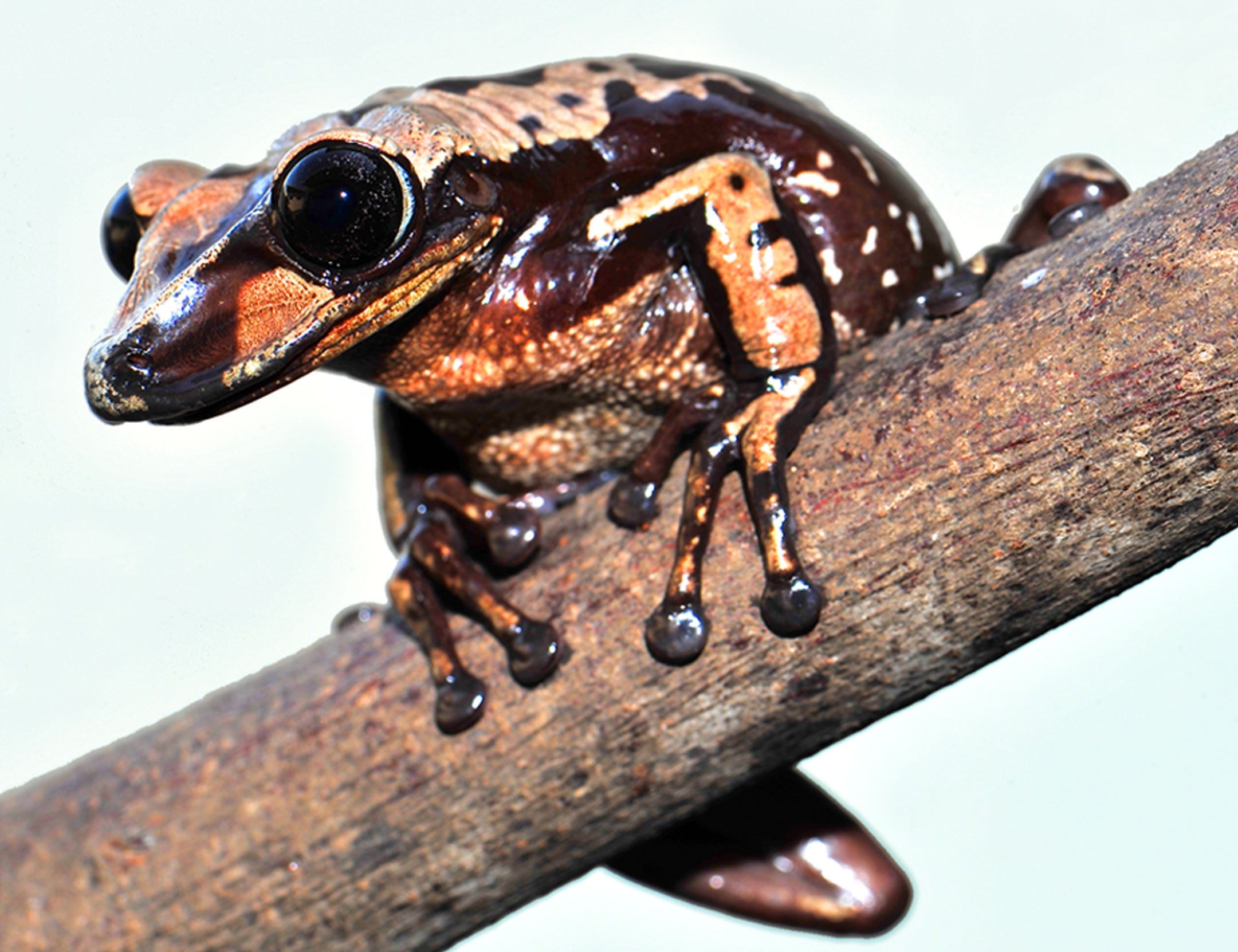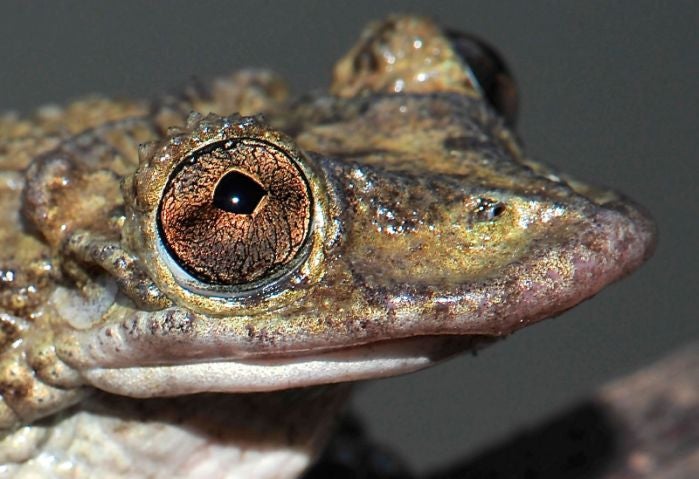Venomous frogs that head-butt poison into potential predators discovered by scientists
The frogs possess venom that is more toxic than that of a pit viper snake

Your support helps us to tell the story
From reproductive rights to climate change to Big Tech, The Independent is on the ground when the story is developing. Whether it's investigating the financials of Elon Musk's pro-Trump PAC or producing our latest documentary, 'The A Word', which shines a light on the American women fighting for reproductive rights, we know how important it is to parse out the facts from the messaging.
At such a critical moment in US history, we need reporters on the ground. Your donation allows us to keep sending journalists to speak to both sides of the story.
The Independent is trusted by Americans across the entire political spectrum. And unlike many other quality news outlets, we choose not to lock Americans out of our reporting and analysis with paywalls. We believe quality journalism should be available to everyone, paid for by those who can afford it.
Your support makes all the difference.The first venomous frogs which use their heads as weapons to inject poison into potential predators have been discovered in Brazil, scientists said.
The head-butting frogs have tiny spines protruding from the front of their skulls which can inject poison that is more toxic than that of a pit viper snake, the researchers said.
Although some tropical frogs are known to be poisonous when eaten, none has until now had a “delivery mechanism” and so were not considered venomous, unlike snakes, they said.
However, two species of frog living in Brazil have been found to be capable of injecting poison into their adversaries using their head-butting spines as toxic weapons, said Edmund Brodie of Utah State University in Logan, Utah.
"Discovering a truly venomous frog is nothing any of us expected, and finding frogs with skin secretions more venomous than those of the deadly pit vipers of the genus Bothrops was astounding," Dr Brodie said.
The venomous traits of the two species, Corythomantis greeningi and Aparasphenodon brunoi, may have gone unnoticed had not one of the researchers been stung while handling the less toxic of the two – C. greeningi.

When Brazilian Carlos Jared of the Instituto Butantan in Sao Paulo was collecting frogs for research he damaged his hand when handling one of the frogs, which caused intense, radiating pain for a period of about 5 hours.
“This action should be even more effective on the mouth lining of an attacking predator," Dr Jared said.
Tests on the other frog, A. brunoi, which also has a set of spines coming off the front of the skull, showded that it produces a toxin which is even more toxic, with one gram capable of killing more than 300,000 mice or about 80 people.
“It is unlikely that a frog of this species produces this much toxin, and only very small amounts would be transferred by the spines into a wound. Regardless, we have been unwilling to test this by allowing a frog to jab us with its spines,” Dr Brodie said.
The researchers point out in their study, published in the journal Current Biology, that although many amphibians have gland in their skin capable of producing toxins, the lack of delivery mechanisms meant they were not considered to be venomous.
“These frogs have well-developed delivery mechanisms, utilizing bony spines on the skull that pierce the skin in areas with concentrations of skin glands,” the study says.
“Because even tiny amounts of these secretions introduced into a wound caused by the head spines could be dangerous, these frogs are capable of using their skin toxins as venoms against would-be predators,” it says.
Both species of frog have been known to scientits for decades but no-one until now had realised that they were capable of using their heads as venomous weapons. Strikingly, neither species is known to have any natural predators in the wild, which now makes senses, the scientists said.
Subscribe to Independent Premium to bookmark this article
Want to bookmark your favourite articles and stories to read or reference later? Start your Independent Premium subscription today.
Join our commenting forum
Join thought-provoking conversations, follow other Independent readers and see their replies
Comments